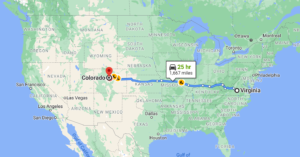Owning a home is a significant achievement, but it also comes with responsibilities and risks. To ensure a safe and secure living environment, it is crucial to implement effective risk management practices. In this blog post, we will provide a comprehensive guide to mastering risk management in homeownership. We will explore best practices that cover insurance reviews, security measures, maintenance upkeep, and other essential considerations.
Regular Insurance Reviews:
Evaluate Coverage Levels: Review your homeowner’s insurance policy regularly to ensure it provides adequate coverage for your property, belongings, and liability. Consider factors such as the replacement value of your home, current market prices, and any changes or renovations made since obtaining the policy.
Understand Policy Exclusions: Familiarize yourself with the policy exclusions and limitations to fully understand what risks may not be covered. Consider additional coverage options, such as flood insurance or riders for high-value items, if necessary.
Reassess Deductibles: Evaluate your deductible amounts and determine if they are still suitable for your financial situation. Adjusting deductibles can impact your premium costs and potential out-of-pocket expenses in the event of a claim.
Enhance Home Security:
Install Security Systems: Invest in a comprehensive home security system, including alarms, surveillance cameras, and motion sensors. Ensure the system is regularly maintained and integrated with professional monitoring services if desired.
Reinforce Entry Points: Install sturdy locks, deadbolts, and reinforced doors on all entry points. Consider additional security measures such as window bars, security film, or smart locks for added protection.
Outdoor Lighting: Properly illuminate the exterior of your property, including pathways, entrances, and backyard areas, to deter potential intruders.
Maintain Regular Upkeep:
Conduct Routine Inspections: Regularly inspect your home for potential issues or maintenance needs. Check for leaks, cracks, faulty wiring, or any signs of damage that may pose a risk to your property or its occupants.
Plan for Preventive Maintenance: Create a maintenance schedule for tasks such as HVAC system servicing, gutter cleaning, roof inspections, and tree trimming. Properly maintaining your home can help prevent costly repairs and mitigate risks associated with neglect.
Ensure Proper Ventilation: Maintain good indoor air quality and reduce the risk of mold or other air quality issues by ensuring proper ventilation throughout your home. Regularly clean or replace air filters and monitor humidity levels.
Disaster Preparedness:
Create Emergency Plans: Develop emergency plans for natural disasters, such as earthquakes, hurricanes, or wildfires. Establish evacuation routes, designate meeting points, and ensure all family members understand the procedures.
Backup Important Documents: Keep digital or physical copies of essential documents, including insurance policies, identification, and property records, in a secure location. Consider storing copies off-site or in cloud storage for added protection.
Maintain Emergency Supplies: Stock an emergency supply kit with essentials like non-perishable food, water, first aid supplies, flashlights, batteries, and a battery-powered radio. Regularly check and replenish supplies as needed.
Consider Additional Protection:
Home Warranty: Evaluate the benefits of a home warranty that covers major appliances, systems, and home repairs. This additional protection can provide peace of mind and financial relief in the event of unexpected breakdowns.
Liability Protection: Consider personal liability umbrella insurance to provide extra coverage in case of accidents or injuries that occur on your property. This coverage can protect your assets and provide an additional layer of security.
Mastering risk management in homeownership is essential for creating a safe and secure living environment. Regularly review your insurance coverage, enhance home security measures, maintain proper upkeep


